
Water Softener Buyers Guide
 Have you ever tried to wash your hair in the shower but couldn’t get that thick, bubbly lather? For me, unless I feel that foam between my fingertips, I’m not clean.
Have you ever tried to wash your hair in the shower but couldn’t get that thick, bubbly lather? For me, unless I feel that foam between my fingertips, I’m not clean.
On a microscopic level, that lack of lather is due to high concentrations of calcium and magnesium in the water, a condition known as hardness. Water hardness varies by region and affects everything from how clean you feel after a shower, to how sparkly you can get your dishes. It can also leave unsightly residue on shower walls and clog pipes with limescale buildup.
To remove water hardness, you need a water softener.
What is a water softener?
A water softener is a household appliance used to remove dissolved calcium and magnesium from your entire home's water. Water softeners serve your entire home’s water supply and are located at the point-of-entry.
Certain parts of the country, especially in the Plains and Rockies, have harder water than others, meaning there are more deposits and a greater need for water softeners.
Many people think if you get municipal water, then you don’t need a water softener. It all depends on where your municipality sources the water. If the source has hard water, you will still benefit from a water softener, or at least a water conditioner.
How does a water softener work?
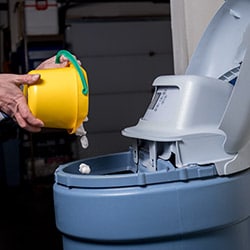 Water softeners contain two tanks: a softening tank and a brine tank. These two tanks are very often combined into one solid unit. A water softener works using both tanks as follows:
Water softeners contain two tanks: a softening tank and a brine tank. These two tanks are very often combined into one solid unit. A water softener works using both tanks as follows:
- Hard water flows into the water softener tank.
- Inside the water softener tank are polystyrene beads covered in sodium ions (aka salt). As the hard water flows through the beads, the calcium and magnesium ions are exchanged with the sodium ions in a chemical process known as ion exchange.
- The water flows out “softened” and goes to your fixture.
- Once the sodium ions are all replaced in the water softener tank, the system needs to recharge. Between 40 and 60 gallons of saltwater from the brine tank flow into the water softener tank in multiple stages.
- The brine water flushes the calcium and magnesium ions down the drain and replenishes the salt for another round of water softening.
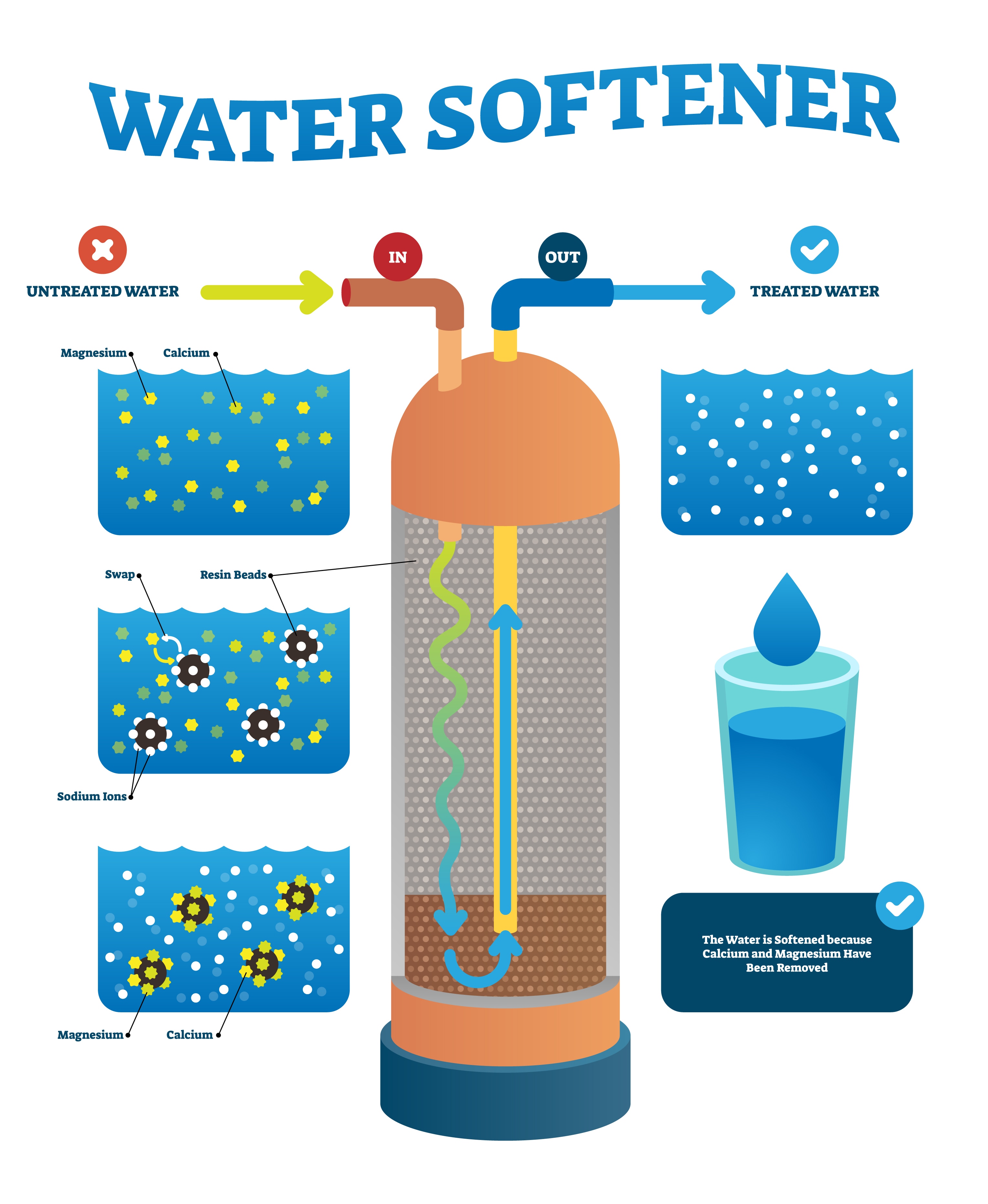
You will need to buy and add salt to the brine tank regularly to keep it working. Tank recharges are typically scheduled to occur during off-hours when water isn’t needed. If you do use water while the water softener is recharging, you’ll still get hard water.
Water Conditioners
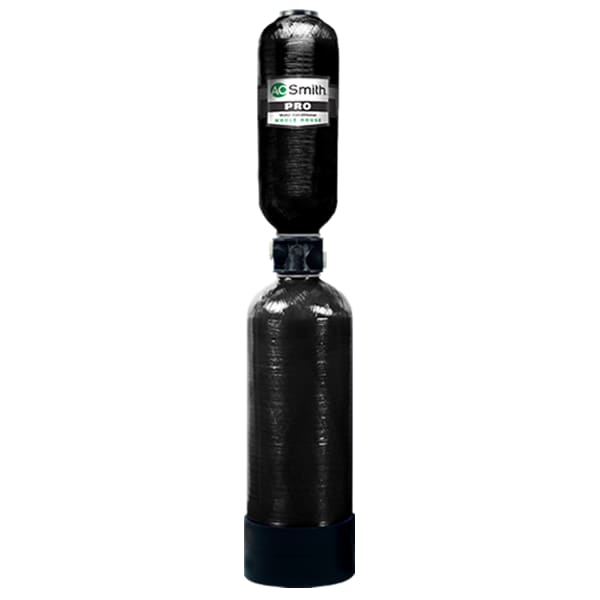 A smaller, more affordable solution to remove mineral deposits and even chlorine is through a water conditioner, which helps prevent scale buildup.
A smaller, more affordable solution to remove mineral deposits and even chlorine is through a water conditioner, which helps prevent scale buildup.
Unlike a water softener, a conditioner uses Potassium Chloride instead of salt, which can be important for people with low-sodium diets. However, a conditioner doesn’t match the removal power of a water softener.
Water softeners and conditioners will not remove toxic metals and bacteria/viruses. For that, you will need a separate water filtration system.
Buying a Water Softener
Water softeners come in a wide range of shapes, sizes, and price ranges. The first step in picking the right one is figuring out what size you need.
What size water softener do I need?
Water softeners are sized based on how many grains of hard water minerals they can remove between regeneration cycles. If your household has eight people with incredibly hard water, then you will need a larger water softener than a three-person family with moderately hard water.
To estimate your water softener size, figure out the following:
- How many gallons of water your household uses in one day.
- The number of grains of hard water per gallon that are in your water supply (you can use a hard water test kit to figure this out).
Multiply the two numbers together to arrive at the minimum amount of hardness the water softener would need to remove per day. Sizing slightly above this minimum will keep you on the safe side.
For example, suppose your household uses 300 gallons of water per day, and the water has 10 grains of minerals per gallon. By multiplying the two figures, your water softener would need to be large enough to remove 3,000 grains of hard water per day.
Water Softener Regeneration Frequency
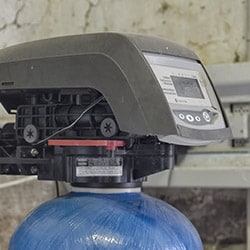 How often the water softener regenerates will directly affect how much water and salt you use.
How often the water softener regenerates will directly affect how much water and salt you use.
Traditional water softener controls use timers to regulate regeneration. You preset a time and day to regenerate based on your average water usage. Typically, you would set it to renew in the middle of the night when you would have little to no need for soft water.
The downside occurs if you veer from your average water usage. If you use water more quickly than expected, the system won’t regenerate in time, and you’ll be stuck with hard water until the timer goes off. If you use water more slowly than expected, the system will regenerate before it needs to, wasting water and salt.
Smart water softener controls, also known as demand-initiated regeneration (DIR) controls, calculate water usage to decide when to regenerate the system automatically. As such, they are more efficient than timer controls by using water and salt only when necessary.
Standards and Other Features
Other important points to consider when shopping for a water softener include:
- Make sure it’s certified. The key standard to look for in a water softener is NSF/ANSI 44, which is based on how efficiently the system uses salt and water to remove hardness. If the water softener doesn’t meet this standard, its effectiveness is doubtful, and you could be throwing money down the drain.
- Look for a bypass valve. The more you run your water softener, the more frequently it will need to regenerate. Since regeneration uses several gallons of water, you want to cut down on soft water use when it’s not required, like watering your garden or filling the swimming pool.
A bypass valve lets the water skip the water softener when you don’t need soft water, saving on unnecessary use, and wasted resources. - Type of water softener. As mentioned, some water softeners come with separate water and brine tanks, while others combine them. The combined ones are more modern and take up less space.
Cost and Maintenance
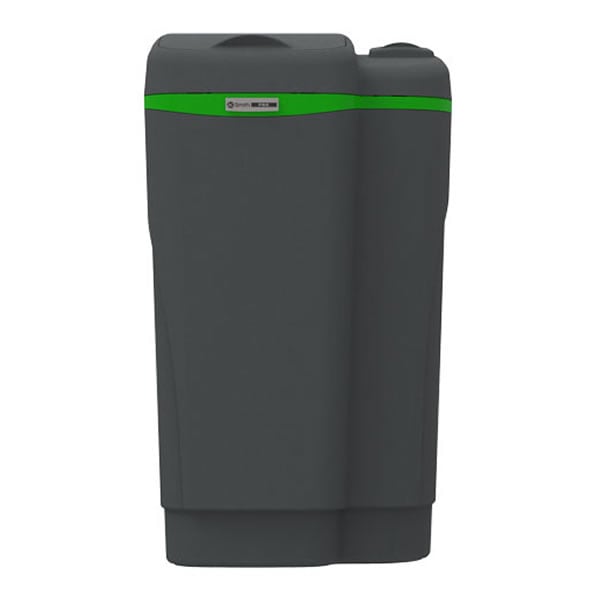 Water softener cost depends on the size and technological capabilities of the system. For example, a system with DIR controls will cost more than one with a timer. Generally speaking, expect to pay anywhere from $500 to $1,000 for a salt-based water softener. Water softener installation costs will vary based on local labor rates.
Water softener cost depends on the size and technological capabilities of the system. For example, a system with DIR controls will cost more than one with a timer. Generally speaking, expect to pay anywhere from $500 to $1,000 for a salt-based water softener. Water softener installation costs will vary based on local labor rates.
As far as water softener system maintenance goes, the main thing you, the consumer, will need to remember is to add salt when the unit dips below one-third full. Use clean, white pellet, cube-style, or solar salt. Do not use rock salt. You can also disinfect the appliance by adding household chlorine bleach into the brine tank and running a manual regeneration cycle. Refer to your owner's manual for details.
Soften Up Your Life
Now that you know the basics behind water softeners and what to look for, you’re ready to experience the benefits of softer water on your skin, dishes, and plumbing system. Enjoy that foamy lather every time you shower.

